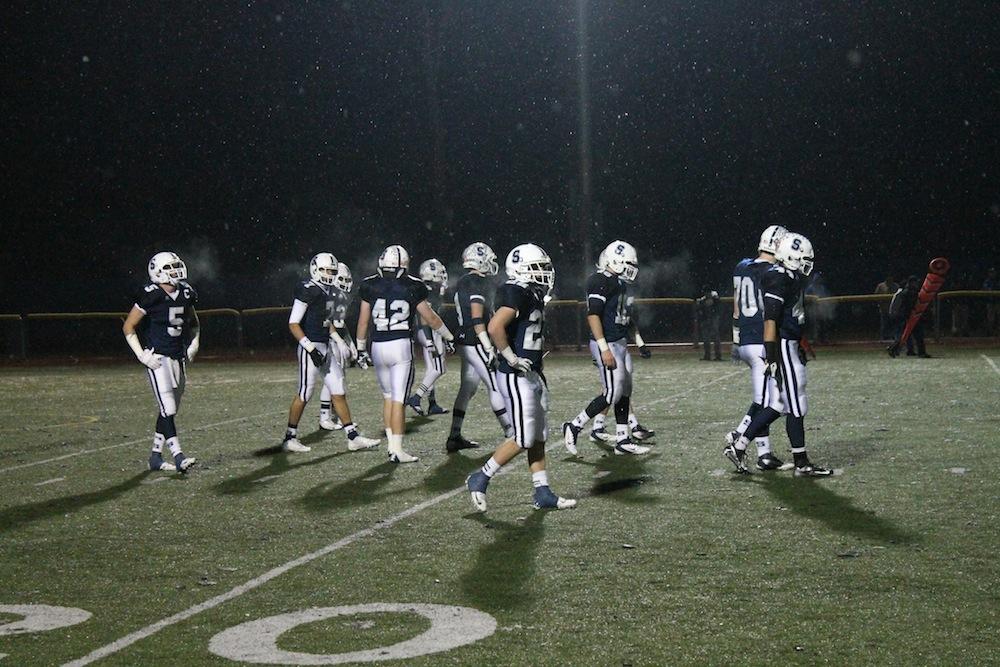Staples athletes do not only compete wearing a blue and white uniform, do not only sport the block S in their competitions. Some athletes at Staples, namely the rowers, are part of a team outside of school. Many students at Staples have been rowing since they were in middle school and remained on a team at the Saugatuck Rowing Club.
These athletes not only love the sport of rowing but also the team that they have. The team is composed of people from Weston, Fairfield, New Canaan, Wilton, Ridgefield, and Redding.
“I actually like participating in a sport that isn’t made up of one hundred percent Staples students. I’ve been able to meet people from different towns and high schools and that has been fun,” said Max Gibson ’12.
Instead of having other schools as the competition, these athlete get the other students as their teammates. Not only does this broaden these athletes circle of friends, it leads to very different team dynamics.
Gibson explained that the boys and girls team becomes “pretty unified” because the races and practices are always at the same time, at the same place.
The rowers also become very close, due to the nature of the sport. They put in long hours of training, according to Jake Petterson ’12.
“We spend about 24 hours per week, 49 weeks per year on rowing, whether that is practice time, time spent at regattas, or time spent outside practice doing extra work on our own,” Petterson said.
However, this amount of time commitment leads to a great team dynamic. “Our team is really close-knit. We have to spend a lot of time with each other, so we’ve ended up being comfortable with each other,” Gibson said.
The team itself is not the only unique aspect of rowing. “Rowing is not like other sports, because strength and an athletic body isn’t enough to do well. Neither is technique,” said Maya Schumer ’12.
Schumer rowed throughout high school until she “retired” from the sport this past winter to pursue some of her other interests, including art. She is still an expert about the sport and claims that rowing requires many different talents. “You need to build up strength and technique and endurance and put in the extra hours to do so.”
With the long hours and the tough tequnique of rowing comes racing. Both Petterson and Gibson explained that racing, and winning, are definitely the best parts of rowing.
“One of the best feelings is when you are pushing your way down the course, looking at the backs of the other teams that you are beating. We train for hours all year to compete for around 6 or 7 minutes. It is great to have our hard work rewarded with good results, though,” Petterson said.
The reward of racing is extremely important to the rowers. Gibson said that winning is his favorite aspect of rowing. “Not just the winning itself, but working really hard with your team all year and having it all pay off,” he said.
Schumer agrees that in the end, everything is completely worth it. “When you end up somewhere like the National Championships, making it to the Grand Final, where you compete as with the six boats of your category in the entire nation. It’s a rush, to say the least,” she said.
The hours of training finally pay off in these races and the team comes together to celebrate all their hard work with an exciting victory.
The rowers also take their victories, their training, and their memories of being on the team with them in the future. Many graduating seniors are going to continue rowing in college. Specifically, Petterson will be rowing at Columbia next year and Gibson will be on the lightweight team at Dartmouth.
In conclusion, Petterson explained that rowing is not always easy. But with the hardship comes a close group of friends who work to win their races and enjoy a sport they love. “Rowers definitely have a love-hate relationship with the sport. It is not easy to train day after day when you don’t always get immediate feedback via a competition,” Petterson said.













































